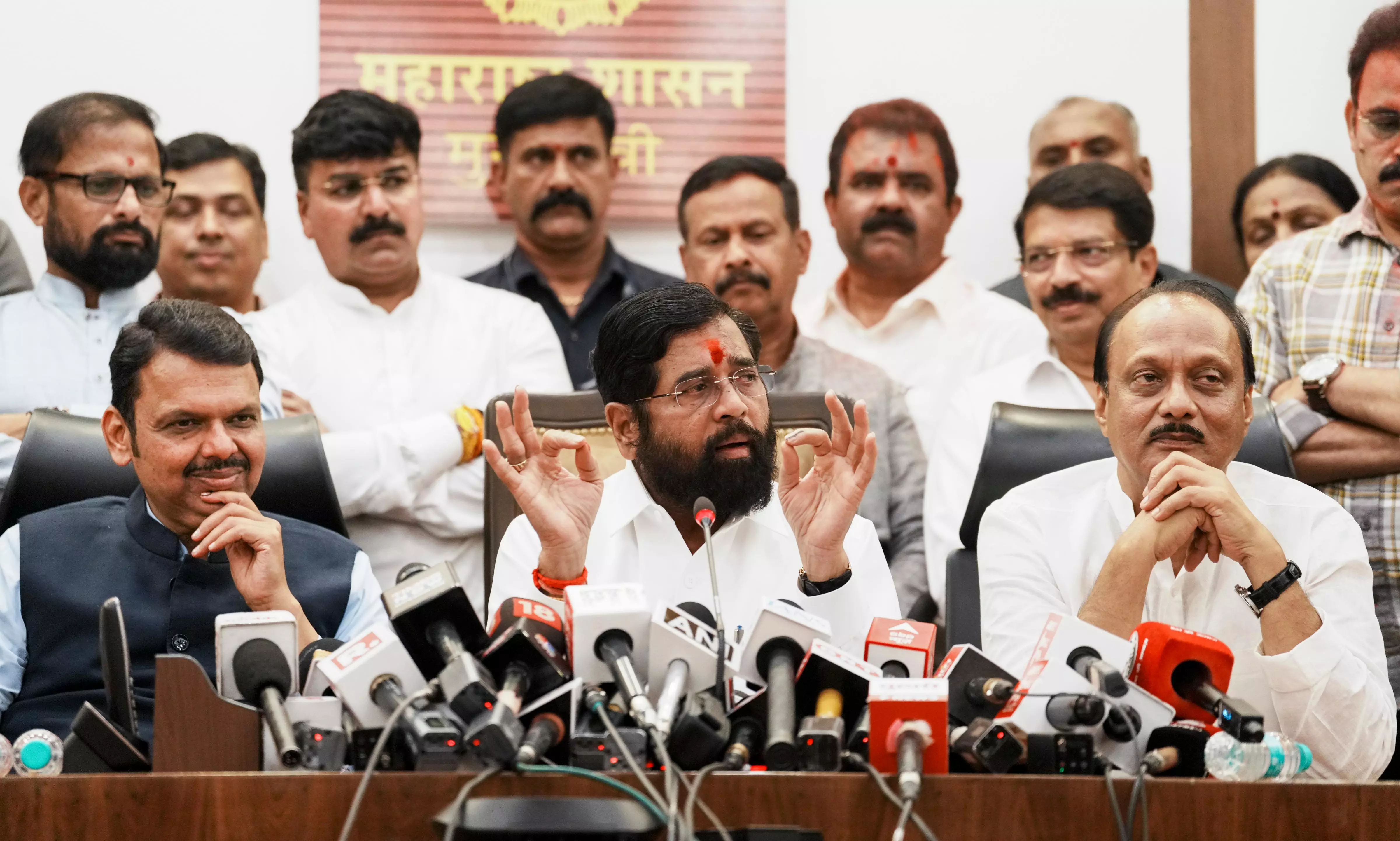
BJP's Maharashtra landslide: Lessons, challenges, and the road ahead
BJP's strategic recalibration after Lok Sabha setbacks fuels Maharashtra win, while Jharkhand's INDIA bloc resilience shows limits of majoritarian politics

In the latest episode of Off the Beaten Track, political scientist Rahul Verma joined Nilanjan Mukhopadhyay to dissect the outcomes of recent assembly elections in Maharashtra and Jharkhand. The verdicts highlight key trends in Indian politics, particularly the BJP's ability to course-correct and adapt following setbacks in the Lok Sabha elections earlier this year. Here's a closer look at the insights shared during the discussion:
Maharashtra's verdict: A resounding win for the BJP-led Mahayuti
The BJP-led Mahayuti alliance secured a landslide victory in Maharashtra, a result that few predicted during the campaign. The alliance's decisive two-thirds majority stands in stark contrast to the tight race many had anticipated, especially considering the nearly equal vote shares between alliances in the Lok Sabha elections earlier this year.
According to Verma, several factors contributed to this surprising outcome:
Enhanced coordination within the BJP-led alliance: Unlike the Maha Vikas Aghadi (MVA), which struggled with seat-sharing and internal disputes, the BJP-led Mahayuti maintained greater unity and focus.
Strategic welfare schemes: Programs like Ladli Behna gained traction, particularly among women and rural voters, helping to neutralise discontent among farmers and Maratha youth.
Resource advantage: As the ruling party at both the state and central levels, the BJP leveraged its superior financial and organisational capabilities.
Course correction post-Lok Sabha: Learning from its setbacks earlier this year, the BJP recalibrated its ground game, improving voter outreach and campaign messaging.
Also Read: Maharashtra and Jharkhand election results: Decoding contrasts and implications
Majoritarianism in campaigns: Mixed success
The BJP's campaign in Maharashtra leaned heavily on majoritarian rhetoric, with slogans like "if we are together, we are safe," echoing sentiments of Hindu consolidation. While this narrative appeared effective in Maharashtra, it faltered in Jharkhand.
Verma highlighted that while religious mobilisation is a recurring element in BJP campaigns, it works best in regions where it can still shape the political landscape. In states like Jharkhand, where tribal and socio-economic issues dominate, majoritarian narratives faced strong resistance.
Jharkhand: INDIA Bloc holds ground
In Jharkhand, the INDIA bloc retained its position, thanks in large part to Chief Minister Hemant Soren's astute leadership. Soren combined pragmatic politics with welfare measures like cash transfers to women, countering BJP's attempts to stoke fears about illegal immigration and demographic shifts.
Verma noted that Jharkhand's verdict underscores the limits of majoritarian politics in regions with diverse socio-political dynamics. It also signals that welfare schemes targeting marginalised communities remain a powerful tool for incumbents.
Also Read: Jharkhand: How fiery Soren beat divisive tactics, stole BJP's thunder
What lies ahead for the BJP?
The BJP's recent wins in Maharashtra and Haryana's by-elections offer the party a reprieve, but significant challenges loom. The upcoming assembly elections in Delhi, Bihar, and key southern states will test the BJP's adaptability and resilience.
Delhi: Despite the BJP's solid base of 35-36% votes in the capital, the Aam Aadmi Party's (AAP) stronghold among the economically disadvantaged and its welfarist image make it a formidable opponent. The absence of a charismatic BJP state leader comparable to Arvind Kejriwal remains a key hurdle.
Bihar: Nitish Kumar's leadership and the Rashtriya Janata Dal's (RJD) strong support among Yadavs and Muslims will challenge the BJP. However, the BJP's alliance with JD(U) and LJP provides it with a broader social coalition.
National trends: Verma pointed out that Indian politics remains highly dynamic, with shifts in momentum occurring every few years. The BJP’s dominance stems from its unmatched organisational strength and appeal across diverse voter bases, but it cannot afford complacency. Opposition alliances, like the INDIA bloc, are gaining ground in some areas.
Also Read: How Mahayuti turned the tables on MVA in Marathwada region amid Maratha quota row
The role of proportional representation in elections
Mukhopadhyay and Verma also touched on the need for electoral reforms, particularly a shift from the first-past-the-post (FPTP) system to proportional representation (PR). They argued that the current system often leads to discrepancies between vote share and seat share, as seen in Maharashtra, where the BJP won nearly half the seats with just 26.7% of the vote. Exploring hybrid models, like Germany's mix of FPTP and PR, could address these imbalances.
Conclusion
The Maharashtra verdict serves as a reminder of the BJP's capacity for strategic recalibration and its dominance in Indian politics. However, the party faces an uphill battle in states like Jharkhand, Delhi, and Bihar, where diverse regional dynamics challenge its approach. As both the BJP and the opposition refine their strategies, the stage is set for a closely contested political landscape in the run-up to the 2024 general elections.
Disclaimer: (The content above has been generated using a fine-tuned AI model. To ensure accuracy, quality, and editorial integrity, we employ a Human-In-The-Loop (HITL) process. While AI assists in creating the initial draft, our experienced editorial team carefully reviews, edits, and refines the content before publication. At The Federal, we combine the efficiency of AI with the expertise of human editors to deliver reliable and insightful journalism.)

